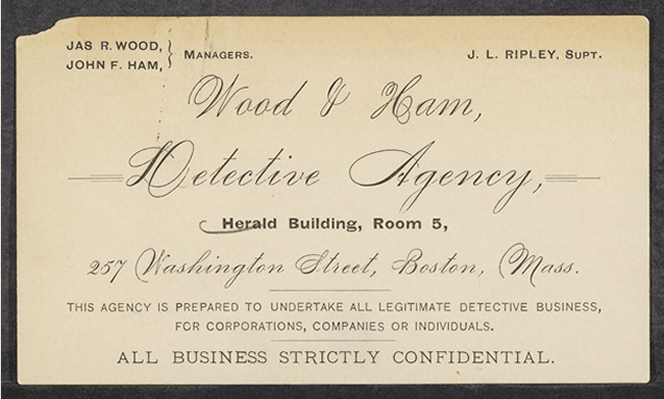By Jen Manion
Crime, Punishment, and Popular Culture, 1790-1920 is a trove of material for scholars and students interested in the history of gender, gender expression, and sexuality. Criminal accounts provide an illustrative window into the culture of the time by highlighting the lives, actions, and motives of those who crossed the line of so-called acceptable behavior. Women’s participation in illicit activities such as theft, robbery, assault, or murder were generally sensationalized in both trial and newspaper records, giving such accounts a sexual tinge no matter how seemingly mundane. The range of source material—from newspaper accounts to trial manuscripts to organizational records to sensational dime novels—allows readers to approach a singular topic from different perspectives. Historians can examine the treatment of people along lines of race, class, and gender, or chart changes in such regulations over time.
Scholars are increasingly viewing the carceral state as an extensive network of institutions—from policing authorities, holding pens, and county jails to almshouses, hospitals, asylums, and houses of refuge—with deep roots throughout the country. There are many important inquiries in this area for historians of gender and sexuality working at the intersection of race and slavery. One story points to the unusual acquittal of an enslaved man for murder. Titled “Trial of a Slave for Murder,” the article describes a slave named Richard who killed an enslaved woman named Maria under the orders of his mistress. The court ruled, “Whenever a slave, in the presence and command of his owners, committed an unlawful act, as murder or other crime, he was the mere instrument of his owner’s cruelty, and having no will of his own, could not be amenable to the punishment of the law.” This short account invites far more questions than it answers and is a starting point for exploration of criminal justice in slaveholding Charleston, especially given the concluding sentence of the article: “The mistress is, therefore to be tried for killing Maria.”[i]
Questions that animate contemporary concerns of mass incarceration can be traced through their historical antecedents for those who want to get to the “bottom” or the “beginning” of these things. An invaluable resource on this topic is the Pennsylvania Journal of Prison Discipline and Philanthropy, published annually from 1845–1920. As was common in the early decades of the penitentiary, reform associations and government committees often included updates from nearby states and even other countries as they shared ideas and competed with each other for prominence. To that end, the third volume of the Journal includes reports from New York, Illinois, London, and France in addition to the organization’s home institution, Philadelphia’s Eastern State Penitentiary. One particularly generative angle is to explore the intersection of both racial and gender classification in terms of segregation and the treatment of inmates.
For instance, by the 1840s, it was common for prison personnel to refer to most people using one of two racial designations: black or white. To that end, one can search the term “black” and instantly identify all of the places in the Journal that refer explicitly to African American inmates. These often occur in charts or indexes that, for example, break down categories by race and sex, as well as other factors such as crime committed, place of birth, length of sentence, etc. When the search results are sorted by relevance, the second result leads to an instance of the term “black” that gives considerable insight into the state of racism, sexism, and punishment with one simple line: “And we cannot doubt that many black women were committed to prison for acts that were not visited upon white females by any considerable penalty.” While the keyword approach is a good starting point, it is clear that this line is in the middle of an extended analysis of racism in punishment that must be read in its entirety for full understanding.
Speaking to a different type of crime, there was much said about sex workers in the nineteenth century, from scandalous dime novels of adventurous affairs to morose accounts of fallen morality. In the Annual Report of the Board of Police Justices of the City of New York for the Year Ending October 31, 1877 for instance, you will find of thousands of people detained by the Second District Court, only a handful—less than a dozen—were women charged with prostitution. This suggests one of two things—either sex workers were not heavily regulated by New York City police or they were brought in under different charges. There were also a handful of charges for keeping a disorderly house and substantially more people charged with disorderly behavior. Those involved in the sex trade were sometimes referred to as disorderly but that phrase could also apply to numerous other sorts of social chaos or rebellion. One can expand this search by time and place to examine how often women were charged with prostitution. A simple document search in the collection “Nineteenth Century Crime: Literature, Reports, and True Crime from the American Antiquarian Society” yields 200 results. In the Abstract of Returns Concerning Jails for Connecticut in 1871, the findings are similar. Of the 654 people committed to Hartford county jail in 1871, only four of them were charged with being a “common prostitute” and one person for “keeping house of ill-fame.”
There is still much to explore regarding the role of race, gender, and sexuality in shaping the creation, growth, and expansion of the prison system in the United States. Searching the phrase “illicit intercourse” yields some interesting findings. For example, the Report of the Directors of the Connecticut State Prison in 1845 reveals something all too common in the course of prison history—sexual assault and exploitation of female inmates by male keepers and guards. The account states, “Among the female convicts discharged during the past year was the mother of the child born in prison during the year 1842, which was the result of an illicit intercourse between one of the former watchmen, and a female prisoner, confined for the crime of adultery, and employed at that time in the Warden’s kitchen.” The prison was just as often a source of crime and violence as it was a site of justice.
[i] “Trial of a Slave for Murder.” National Police Gazette, 30 Jan. 1847: 162. Crime, Punishment, and Popular Culture 1790–1920. Web. 25 Nov. 2015.


